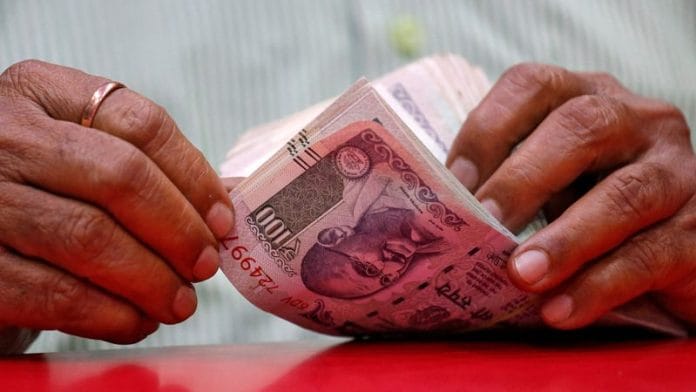Several states in India have shifted back to the Old Pension Scheme (OPS) for their employees. There have been concerns that this may prove to be very expensive for governments as they will have to spend a larger proportion of their revenues in just paying pensions. We may be underestimating the full fiscal burden as we may not be considering the impact of future increases in salaries and pensions owing to the next pay commission recommendations. A future pay commission should bring parity with the National Pension System by reigning in pension increases, or at the very least make changes to the pay structure only after considering the cost of indexation.
At retirement, a government employee typically gets a defined benefit pension of about 50 per cent of last wage as per OPS.
There are two ways in which Pay Commissions impact the value of the pension a government employee enjoys.
Also read: Indians spending beyond their means. Don’t just fix it with freebies, bring policy changes
Pay commissions and pensions
First, if the pay escalation is such that the employee gets a huge wage hike in the last few years of employment, thus making the initial pension automatically much higher. Second, escalation of the dearness relief as well as changes in the pay structure can significantly increase benefits of retirees. For example, the dearness relief for Union government employees was increased from 38 per cent to 43 per cent of the basic pension from 1 January 2023. These rates are revised every six months on the basis of All India Consumer Price Index for Industrial Workers (AICPI-IW). The 7th Pay commission also recommended parity between past retirees and current retirees for the same length of service in the pay scale at the time of retirement. Government employees effectively enjoy inflation as well as wage indexation of their pensions.
In the National Pension System (NPS), an employee has access to their accumulations in the NPS account and has to buy an annuity with at least 40 per cent of the accumulations. The NPS could possibly match 50 per cent of the last wage that the OPS provides if one invested higher amounts in equity, and if one annuitised more than 40 per cent of their final accumulations. However, pension increases because of the increases in dearness relief may be hard to match for any market-based system.
Indexation can be thought of as insurance — a payment is made when a specified event occurs (such as inflation). Insurance needs to be priced. In the case of the OPS, future tax-payers shoulder the burden. In the NPS, the subscriber will have to “purchase” the insurance from the market. If a person wants an inflation indexed annuity, the premium will be higher. This implies that the accumulations over the working life will have to be higher.
Also read: Let states receive global capital. They can’t achieve net zero on their own
Indexing pensions
Defined benefit schemes such as the OPS are financially vulnerable. Improvements in life expectancy, for example, jeopardise the actuarial calculations that may have shaped the policy at its inception. Indexation, however, is not just about the pensions-in-payment. There are multiple aspects of a pension scheme that could be indexed to keep the contribution-benefit relationship in actuarial balance. For example, a pension system could index the retirement age to longevity increases. The first pension payment need not be 50 per cent of the last wage (or the average of the last ten months wage), but could potentially be linked to the proposed indexation of the pensions in payment. One could choose to begin with a relatively lower base if one wants a higher escalation of the nominal value of the pension, thus keeping the overall expenditure constant.
One way of designing inflation indexation is to think of “anticipated” inflation as different from insurance against inflation. The standard pension formula pays for a small escalating annuity. A payout would be made only if actual inflation was higher than a “deductible”. The cost of this insurance would be paid for by the individual. The heterogeneity in inflation across different parts of India might help further defray the cost of the insurance. A future pay commission could ask what the sum-total of the inflow of contributions would have to be if a cohort retiring in a particular year needs to be given an escalating annuity with different deductibles. This way of providing inflation indexation is cheaper than complete inflation indexation. While there are no explicit contributions in the OPS, this allows us to estimate the cost of paying for the indexation.
Early estimates of the cost of government employee pensions estimated the implicit debt to be almost 60 per cent of GDP. When one adds the pay revisions and increases to the dearness allowance, the cost of the defined benefit under Old Pension System is likely to go up. Government employees are a small part of the workforce. Inflation and wage indexation ensures that they get a large share of the revenue receipts in any year. This leaves less for welfare and capital expenditure that directly benefits all the citizens. The 8th Pay Commission, whenever it is set up, should consider removing the wage indexation, and pricing inflation indexation to evaluate the cost to the fiscal on a net present value (NPV) basis.
Renuka Sane is research director at TrustBridge, which works on improving the rule of law for better economic outcomes for India. She tweets @resanering. Views are personal.
(Edited by Anurag Chaubey)






